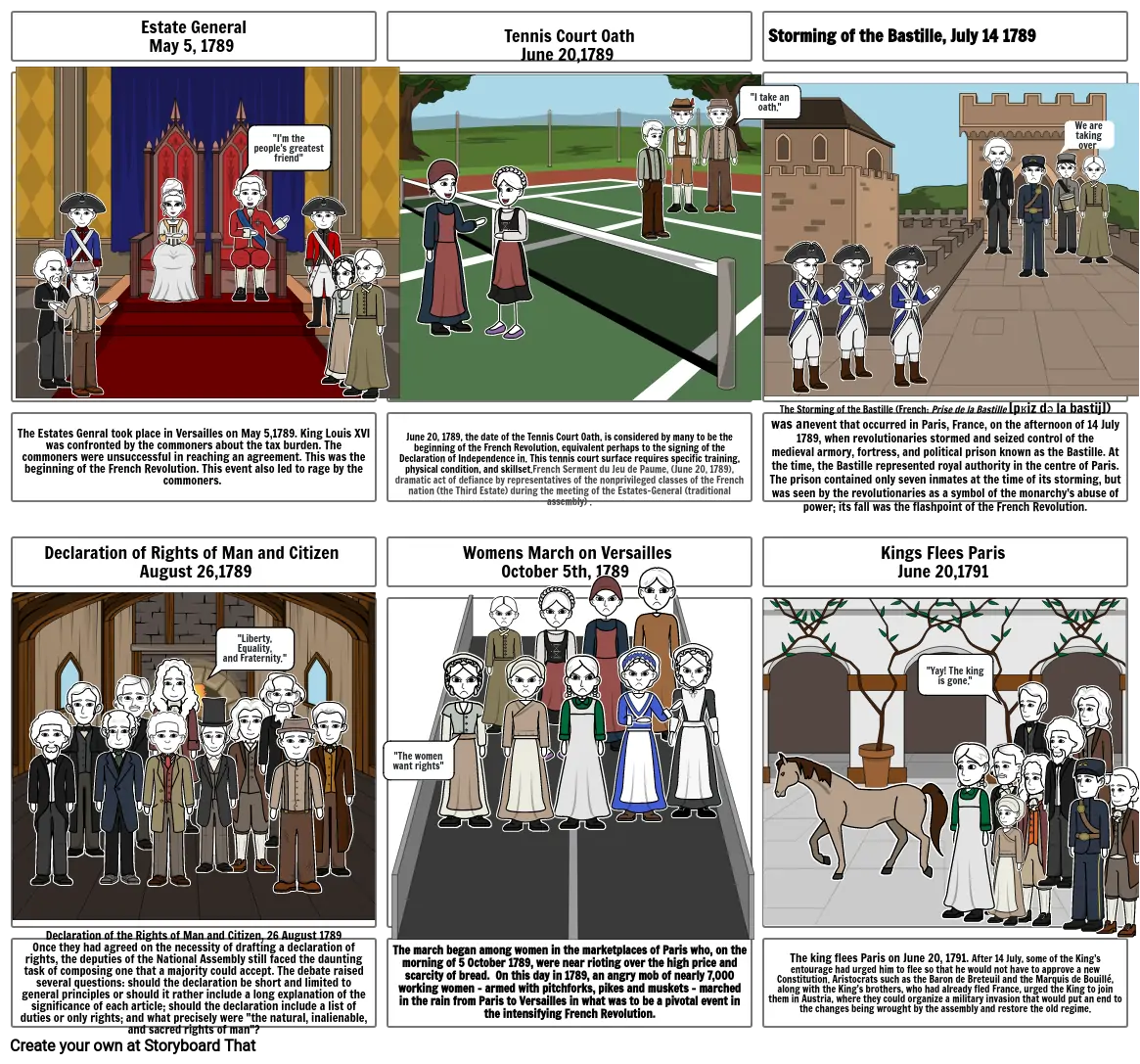French Revolution War

Texto del Guión Gráfico
- Estate GeneralMay 5, 1789
- "I'm the people's greatest friend"
- Tennis Court OathJune 20,1789
- "I take an oath."
- Storming of the Bastille, July 14 1789
- We are taking over
-
- The Estates Genral took place in Versailles on May 5,1789. King Louis XVI was confronted by the commoners about the tax burden. The commoners were unsuccessful in reaching an agreement. This was the beginning of the French Revolution. This event also led to rage by the commoners.
- Declaration of Rights of Man and Citizen August 26,1789
- "Liberty, Equality, and Fraternity."
- June 20, 1789, the date of the Tennis Court Oath, is considered by many to be the beginning of the French Revolution, equivalent perhaps to the signing of the Declaration of Independence in. This tennis court surface requires specific training, physical condition, and skillset.French Serment du Jeu de Paume, (June 20, 1789), dramatic act of defiance by representatives of the nonprivileged classes of the French nation (the Third Estate) during the meeting of the Estates-General (traditional assembly) .
- Womens March on Versailles October 5th, 1789
- The Storming of the Bastille (French: Prise de la Bastille [pʁiz də la bastij]) was an event that occurred in Paris, France, on the afternoon of 14 July 1789, when revolutionaries stormed and seized control of the medieval armory, fortress, and political prison known as the Bastille. At the time, the Bastille represented royal authority in the centre of Paris. The prison contained only seven inmates at the time of its storming, but was seen by the revolutionaries as a symbol of the monarchy's abuse of power; its fall was the flashpoint of the French Revolution.
- Kings Flees Paris June 20,1791
- "Yay! The king is gone."
- Declaration of the Rights of Man and Citizen, 26 August 1789Once they had agreed on the necessity of drafting a declaration of rights, the deputies of the National Assembly still faced the daunting task of composing one that a majority could accept. The debate raised several questions: should the declaration be short and limited to general principles or should it rather include a long explanation of the significance of each article; should the declaration include a list of duties or only rights; and what precisely were "the natural, inalienable, and sacred rights of man"?
- "The women want rights"
- The march began among women in the marketplaces of Paris who, on the morning of 5 October 1789, were near rioting over the high price and scarcity of bread. On this day in 1789, an angry mob of nearly 7,000 working women – armed with pitchforks, pikes and muskets – marched in the rain from Paris to Versailles in what was to be a pivotal event in the intensifying French Revolution.
- The king flees Paris on June 20, 1791. After 14 July, some of the King’s entourage had urged him to flee so that he would not have to approve a new Constitution. Aristocrats such as the Baron de Breteuil and the Marquis de Bouillé, along with the King’s brothers, who had already fled France, urged the King to join them in Austria, where they could organize a military invasion that would put an end to the changes being wrought by the assembly and restore the old regime.
Más de 30 millones de guiones gráficos creados

